Controlling and Identifying Invasive Woodland Plants
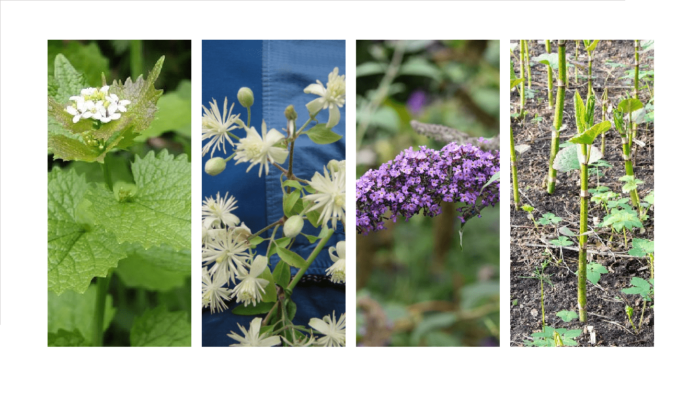
RESOURCES FOR IDENTIFYING AND CONTROLLING FLORA NON GRATA IN YOUR WOODLANDS
Invasive plants such as the ones listed on this page can damage natural resources. They can quickly erode biodiversity in woodlands and reduce wildlife habitat by overtaking and toppling trees, eroding streambanks, crowding out and shading out native plant species, and even changing soil chemistry. On this page we’ve compiled some resources for woodland owners dealing with invasive species. There are many more resources out there, particularly through university extension service websites like this one from WSU Extension.
An ounce of prevention…
Figuring out how to deal with invasive plant species is likely one of the greatest headaches of forest management a landowner will face. That’s why the old adage, an ounce of prevention is worth a pound of cure should become your mantra every time you are conducting some sort of management activity in your forest. Monitoring for invasive species before they become a massive problem is the most effective way to avoid expensive and difficult invasive removal projects. Below are a few tips for preventing the spread of invasives in your forest:
- Conduct an inventory of patches of invasives in your forest, so you know where the problem areas are.
- Regularly monitor your forest for signs of invasives colonizing new areas.
- Ask your logging contractors (or other contractors who come to your forest) what steps they’re taking to clean their equipment to avoid tracking in seeds.
- Regularly monitor any new log landings after a harvest, as these recently disturbed sites are very vulnerable to new invasive populations.
- When manually removing invasives, make sure to safely dispose of any cuttings or dug pieces. If composting on-site, make sure cuttings and root balls are allowed to dry out without touching the ground. Avoid large piles, as these can pose a fire hazard. Check your county’s policies before disposing of invasives in yard waste.
Most of the invasive plants below can be controlled using manual methods or herbicides, or a combination of the two. If persistent and patient, manual removal implemented over the course of a few years is usually effective in removing small to medium-sized invasions.
For larger invasions, manual removal plus the application of herbicides may be needed. Before using an herbicide, carefully consult your state and local laws on herbicide use. Not all herbicides can be used in all places! Sensitive areas (such as wetlands) and protected areas may be off-limits to certain chemicals. Before applying an herbicide, closely read the herbicide label. “A herbicide label is a legal document providing important information about a herbicide, its appropriate use, and the precautions needed to avoid off-target movement and to protect environmental quality. A herbicide label answers the “what, where, when,” and “how” questions about the product,” writes the University of Nebraska.
A cornucopia of terms for these pesky plants
You may have heard the terms “invasive plants”, “non-native plants”, and “noxious weeds” used interchangeably in the past. The truth is the terms overlap, but are not the same. “Noxious weed” is a legal definition, used particularly by state and local agencies. Oregon and Washington states maintain noxious weed lists, and the weeds on the list are categorized according to unique classification systems (Oregon’s classification system is not the same as Washington’s classification system).
“Non-native plant” is a general term referring to species that have been introduced from other regions or countries. Most non-native plant species aren’t invasive or problematic…some are even beneficial.
“Invasive plant” is a more general term usually applied to non-native plants whose introduction causes or is likely to cause economic or environmental harm or harm to human health. A plant can be non-native but not invasive. And, not all invasive plants are on a state noxious weed list.
Funding for invasive removal and control
Local, state, and federal programs can help pay or provide technical support for invasive removal projects. Click here to visit our resource page with a full list of cost-share reimbursements and other assistance programs that could help you remove invasives from your forest.
Some woodland invaders to watch out for in western Oregon and Washington
Keep in mind the list of woodland invasives on this page is far from complete. There are many other invasive plants and noxious weeds around. Find a full list of invasives to watch out in Washington or in Oregon.
Himalayan and evergreen blackberry
Butterfly bush – Buddleia davidii
A large shrub with purple flowers, found along riversides and roads and in cleared patches or edges of forests throughout western Washington and Oregon. Colonizes disturbed areas (for example, a new log landing cleared for a harvest).
Noxious Weed Class Listing
Oregon – Class B
Washington – Class C
Control methods
- Clipping (deadheading) flowers is effective in keeping plants from spreading by seed
- Hand-pulling small seedlings
- Digging up larger plants and carefully disposing of plant parts, as the root balls and branches can resprout
- Application of herbicides with cut-stump treatment method
Educational videos, seminars, & presentations on YouTube
- OSU College of Agricultural Sciences – Bring on the Butterfly Bush: Improving Invasive Plant Laws
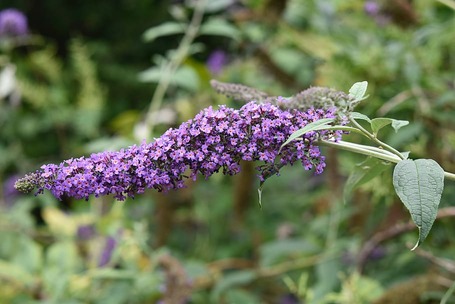
Identification and control publications
- WSU Extension – Bulletin on butterfly bush
- OSU Extension – Invasive Weeds in Forestland: Butterfly Bush
- Oregon Department of Agriculture – Butterfly bush profile
- King County Noxious Weed Control Board – Butterfly bush identification and control
English holly – Ilex aquifolium
A shrub or tree which can invade forested areas and suppress native vegetation. Often found in mixed hardwood or hardwood/conifer stands. Infestations may pose a fire risk. Spreads vegetatively and by seed (often carried by birds).
Noxious Weed Class Listing
English holly is actively cultivated in our region. It is not regulated as a state-listed noxious weed in Oregon or Washington and it at present it can legally be cultivated and sold.
Control methods
- Pulling out or digging up small plants or seedlings when the soil is moist. Remove all roots and dispose of plant parts carefully, as holly can resprout easily. Small to medium plants can be pulled with a weed wrench.
- Herbicide injection with a specialized injection tool is the most effective chemical application method. Cut-stump treatment is moderately effective.
Remember to check that what you are about to treat is English holly, and not Oregon grape! They are similar-looking.
Educational videos, seminars, & presentations on YouTube
- WSU Extension Invasive Weeds Webinar – English Holly control
- Invasive Species Council of Metro Vancouver – English holly identification and management
- West Multnomah Soil and Water Conservation District – How to remove English holly using a weed wrench
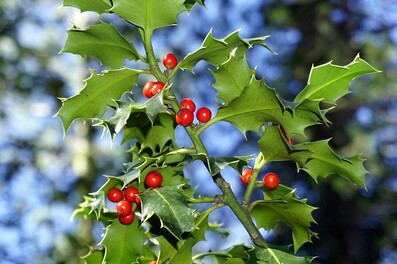
Identification and control publications
- King County Noxious Weed Control Program – Best Management Practices for English Holly
- Metro Vancouver – Best Management Practices for English Holly
- Earthcorps (Seattle) – English Holly Treatment Study Executive Summary
- King County Noxious Weed Board – English holly identification and control
English ivy – Hedera helix
An evergreen perennial with vines that are trailing and/or climbing. Older stems can grow up to a foot in diameter. Roots form along the stem at nodes, allowing the plant to grow on vertical surfaces or across the ground. Can grow throughout the winter. Grows in thick mats and can block out native plants. Ivy vines can trap moisture against the trunk of a tree, inviting rot and pests. The weight of a lot of climbing ivy can cause trees to fall.
Spreads vegetatively, and, when mature, by seeds in berries.
Noxious Weed Class Listing
Oregon – Class B
Washington – Class C
Control methods
- Hand pulling from ground and off of trees while still young and pliable. Remove all runners, as remaining roots can resprout. Pull at least 6 feet away from trees.
- Cutting or prying off larger stems at the bases of trees. The upper stems that remain on the tree will die if they are not rooted in the ground (might take months to die).
- Pulled vines can be bundled and left to rot or dry out as long as the roots are not touching soil. Turn piles regularly to avoid rooting.
- Herbicides may be considered in areas where physical removal is not possible for some reason or for large areas, but generally chemical treatments are not as effective as manual removal.
Educational videos, seminars, & presentations on YouTube
- WSU Extension Invasive Weeds Webinar – English Ivy Control
- Oregon Arboriculture – Remove English Ivy from trees, 3 easy steps for arborists
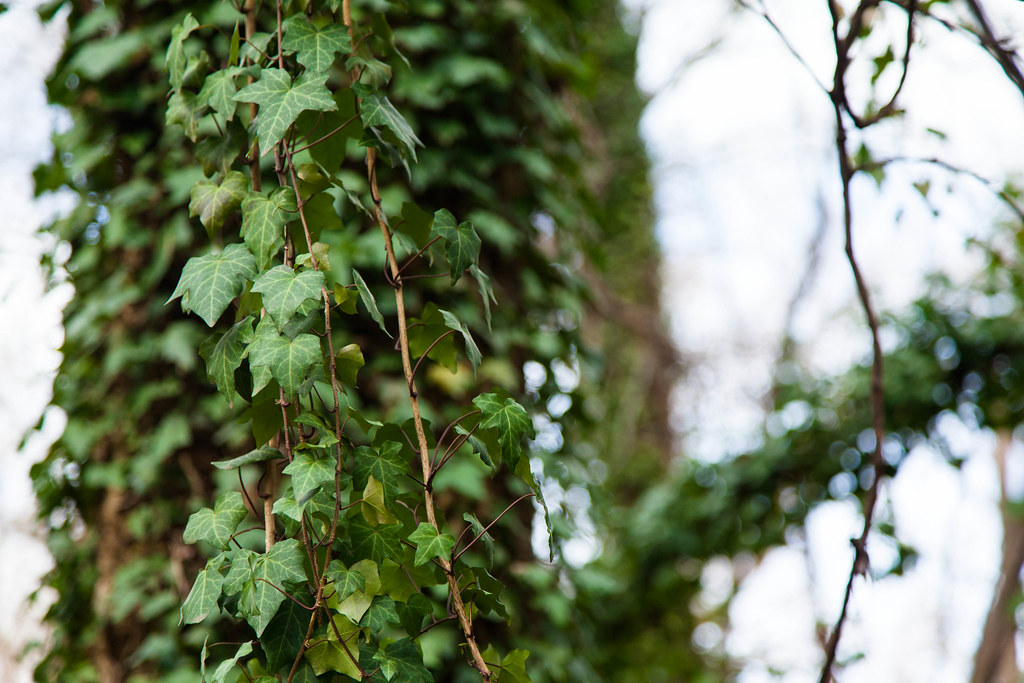
Identification and control publications
- King County Noxious Weed Program – English ivy identification and control
- King County Noxious Weed Control Program – Best Management Practices for English Ivy
- OSU Extension – Invasive Weeds in Forest Land: English Ivy
Garlic mustard – Alliaria petiolata
A herb that gains a foothold in fields and forests by emerging earlier in spring than many native plants and hogging nutrients and sunlight. It has a two-year life cycle, forming low-to-the-ground rosettes of leaves in its first year, then stalks in its second. Typically grows 3 feet tall, and plants are usually single-stemmed and produce small white flowers. Named for their garlicky odor when crushed. Several plants, such as fringecup or money plant, can easily be mistaken for garlic mustard.
Report sightings of garlic mustard to your county noxious weed board!
The north Willamette Valley is the epicenter of garlic mustard in Oregon. Another infestation occurs along the Rogue River. Click here for a distribution map for Washington.
Noxious Weed Class Listing
Oregon – Class B
Washington – Class A
Control methods
- Digging up rosettes (the young plant in its first year), is better than pulling as the plants can snap at the root if pulled.
- Hand pulling mature plants before seeds form is an effective method. Care must be taken to remove all of the roots.
- Any cut or pulled garlic mustard plants must be bagged and discarded, even if only in bud. They can still form viable seeds.
- Controlled burning is also an option for large infestations.
- Mulching using several inches of material such as wood chips has been an effective control method. The edges should be carefully monitored.
Educational videos, seminars, & presentations on YouTube
- Nature Conservancy Canada – Controlling invasive garlic mustard
- City of Davenport, Iowa – Invasive and Noxious Weeds: Garlic Mustard
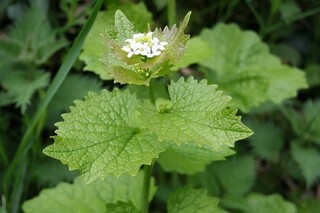
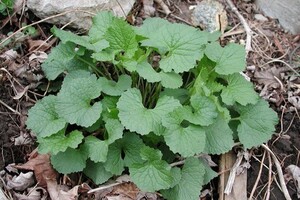
Identification and control publications
- OSU Extension – Garlic mustard bulletin
- King County Noxious Weed Control Program – Garlic mustard identification and control
- King County Noxious Weed Control Program – Garlic mustard Best Management Practices
- Oregon Department of Agriculture – Garlic mustard fact sheet
- Jefferson County Noxious Weed Control Board – Garlic mustard fact sheet
Himalayan and evergreen (cut-leaf) blackberry – Rubus armeniacus and Rubus laciniatus
This widespread and easily recognized invasive commonly grows along disturbed sites, inclusing roadsides, landings, and in open woodlands. Himalayan blackberry forms a thorny thicket that produces edible berries. It displaces and shades out native understory plants. Its extensive root system allows plants to resprout after being cut back. Stem fragments can root. Daughter plants can form where canes touch the ground and root. It also spreads by seed, as wildlife and humans transport berries. Evergreen blackberry is less aggressive than Himalayan, but it will still crowd out native plants.
Himalayan blackberry can be distinguished from our native blackberry, Pacific blackberry or trailing blackberry, by the cross-section of the cane. Mature himalayan blackberry cane has a hexagonal shape to it, while trailing blackberry has a circular shape.
Noxious Weed Class Listing
Oregon – Class B
Washington – Class C
Control methods
- Seedlings can be hand-pulled, especially in loose soil. Try to remove the entire root.
- Hand-digging out larger specimens can be effective at control small patches of the plant, as long as the entire root ball below each cane is removed.
- Mowing older or large thickets through the growing season over consecutive years can be an effective short-term solution. If canes can only be cut back once a season, the best time is when the plant starts to
flower, since much of the root reserves have gone into flowering. - Livestock such as goats often enjoy grazing on blacberry, and can effectively cut stems in the short term. However, as they do not remove root balls, the plants will likely resprout after grazing.
- Herbicides and herbicide mixes can be applied to leaves or cut stems. Take care not to apply herbicides to plants in areas where and at times when people may be picking berries.
Educational videos, seminars, & presentations on YouTube
- WSU Extension Invasive Weeds Webinar – Himalayan Blackberry
- West Mulnomah Soil and Water Conservation District – How to Remove Blackberries
- Green Seattle Partnership – Blackberry removal tips
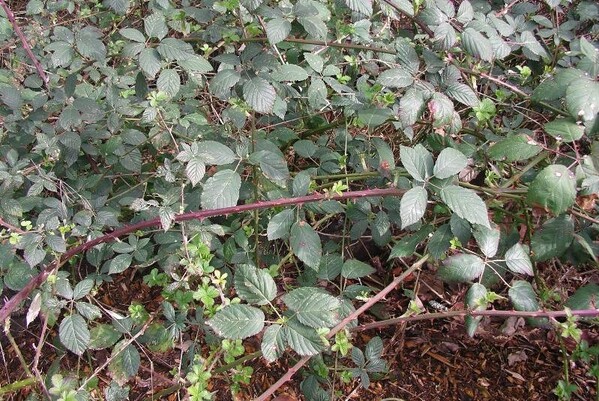
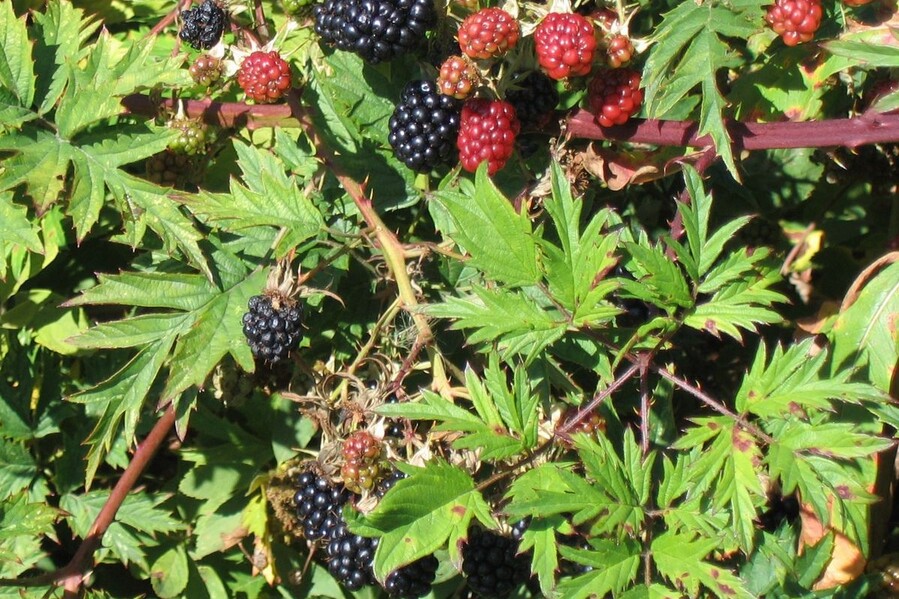
Identification and control publications
- OSU Extension – Himalayan Blackberry and Evergreen Blackberry bulletin
- Whatcom County – Control Options for Himalayan Blackberry
- King County Noxious Weed Control Program – Best Management Practices for Himalayan Blackberry and Evergreen Blackberry
- The Nature Conservancy – Controlling Himalayan Blackberry in the Pacific Northwest
Knotweeds – Fallopia x bohemica, Fallopia japonica, Fallopia sachalinensis, Persicaria wallichii
All four species of knotweed in the Pacific Northwest are invasive. They are large, bamboo-like perennials that spread by long creeping rhizomes to form dense thickets. They are often found along roadways in ditches, or in forests in riparian areas.
Knotweed aggressively displaces native vegetation. It causes erosion problems in streambanks and is considered a potential flood hazard. Despite knotweed’s large rhizome mass, it provides poor erosion control. It can lower the quality of riparian habitat for fish and wildlife, and can changes nutrient cycling of rivers and lower water quality. It reproduces by seed and vegetatively from stem fragments and roots. Knotweed is often transported downstream and takes root in new areas.
Removal of knotweed is possible but requires persistence and patience!
Noxious Weed Class Listing
Oregon – Class B
Washington – Class B
Control methods
- Monitor for new populations in May and June.
- Cutting, mowing and pulling knotweed stimulates shoot growth and depletes the roots. The more shoots there are per linear foot of root, the easier it will be to spot and pull out the roots, exhausting them by depriving them of energy.
- Cut stems close to the ground twice a month or more during the growing season (between at least April and August), and then once a month or more until the first frost, for over 3 to 5 consecutive years. Persistence!
- Rake and pile cut stems so that they can dry out. Dried stems can be crushed and composted on-site or discarded in yard waste. Watch out! Stems or stem fragments left on moist soil or in water may sprout and start a new infestation.
- Herbicide injection hash been shown to be fairly effective in suppressing knotweed either separately or in combination. Follow all state and county guidelines when applying herbicides to knotweed, as riparian areas may operate under specific regulations. Always read the herbicide label!
Educational videos, seminars, & presentations on YouTube
- King County Noxious Weed Control Program – Introduction to Knotweed
- King County – 2021 Invasive Knotweed Biology and Control Seminar
- King County – How to Control Knotweed Without Chemicals
- King County – How to control knotweed by using herbicide injection
- King County – How to control knotweed using herbicide
- King County Noxious Weed Control Program – Invasive Weed Webinar: Knotweed
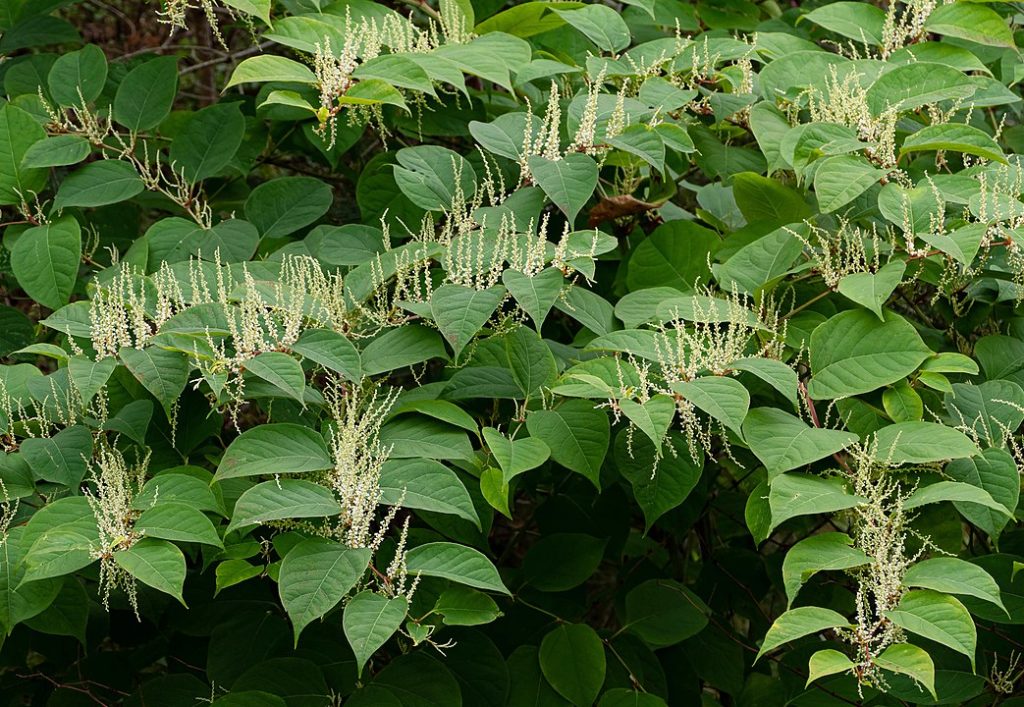
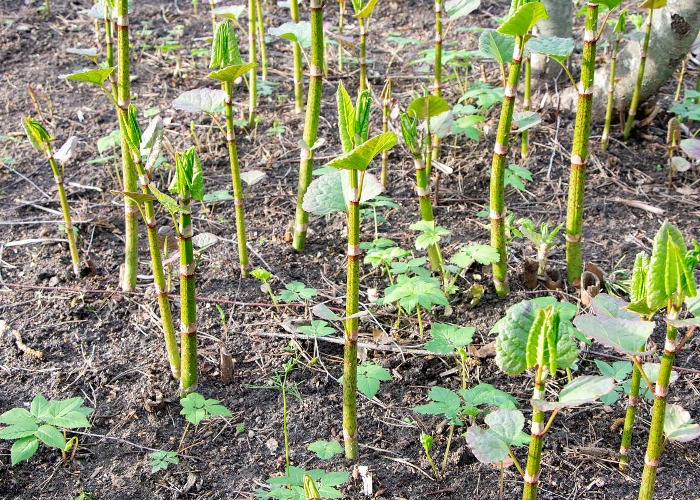
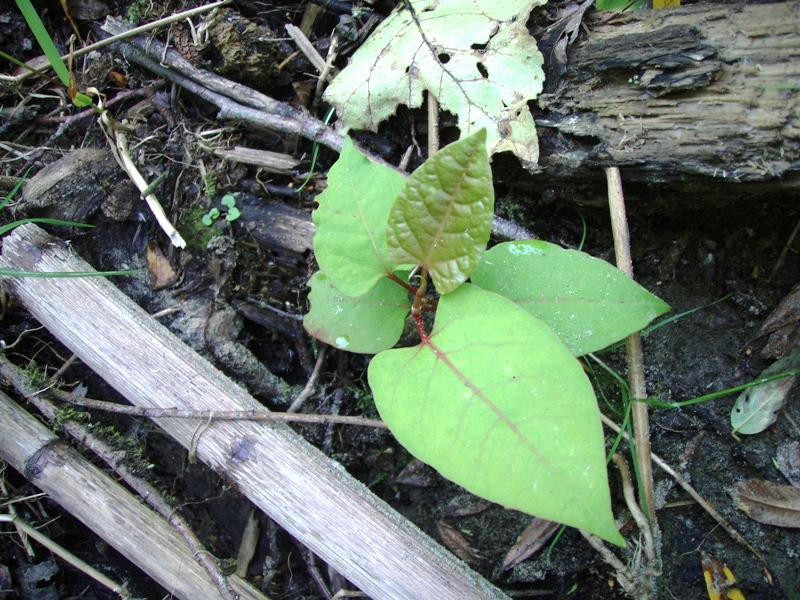
Identification and control publications
- King County Noxious Weed Control Program – Best Management Practices for Knotweed Control
- PNW Extension – Knotweed shrubs: identification, biology, management
- OSU Extension Bulletin – Invasive Weeds in Forestland: Knotweed
- OSU Extension – Biology and Management
- of Knotweeds in Oregon: A Guide for Gardeners and Small-Acreage Landowners
- King County Noxious Weed Control Program – Slideshow on Knotweed
- The Nature Conservancy – Controlling Knotweed in the Pacific Northwest
Old Man’s Beard – Clematis vitalba
Not to be confused with the native pale green lichen also known as old man’s beard (Usnea longissima), the noxious weed old man’s beard is an invasive vine in the clematis family. Its vines can grow up to 100 feet long and can completely blanket trees and other plants, eventually weighing them down and toppling them. After flowering, seeds in the seedheads easily become airborne and spread.
Noxious Weed Class Listing
Oregon – Class B
Washington – Class C
Control methods
- Cut climbing vines at waist height, allowing the upper vines to die back.
- Dig-up lower vines and remove the entire root system.
- Herbicide can be applied to cut stems.
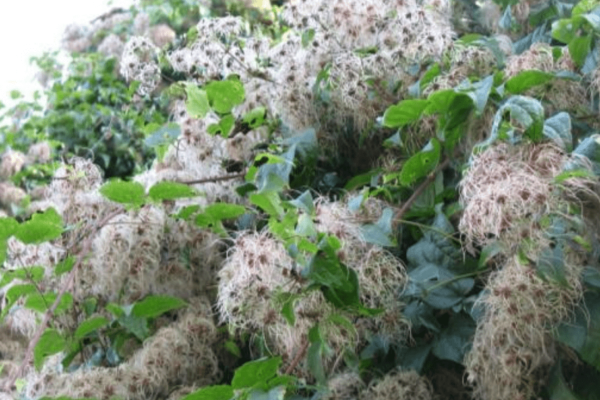
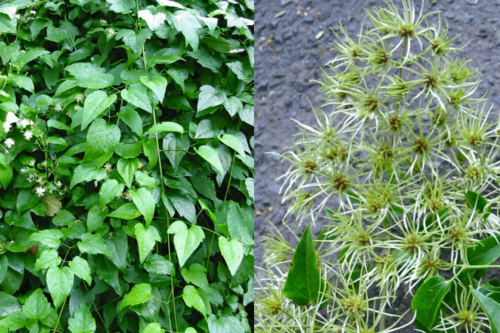
Identification and control publications
- King County Noxious Weed Control Program – Old man’s beard identification and control
- Oregon Department of Agriculture – Old Man’s Beard Profile
- Columbia Gorge Cooperative Weed Management Area – Best Management Practices for Old Man’s Beard
- King County Noxious Weed Control Program – Old man’s beard best management practices
Reed Canary Grass – Phalaris arundinacea
A 3-9 foot tall perennial grass found in wetlands, ditches, and shorelines. Can invade forested wetlands. Its bright green, flat, rough leaves grow at a 45-degree angle from the stems. Flower heads grow in narrow clusters high above leaves. Grows primarily from mid-June to mid-August, reproducing both by seed and vegetatively via rhizomes. It chokes out streams and ditches, increasing flooding and impeding salmon and other wildlife.
Noxious Weed Class Listing
Oregon – Class B (only Phalaris arundinacea var. picta))
Washington – Class C
Control methods
- Hand-digging small patches. Take care to remove as much of the root as possible.
- Covering and mulching an areas with several layers of cardboard and mulch can be successful. The cover should extend well clear of the canarygrass site.
- Herbicide applications over several years can be effective.
Educational videos, seminars, & presentations on YouTube
- University of Minnesota Extension – Identification Tips: Reed Canarygrass
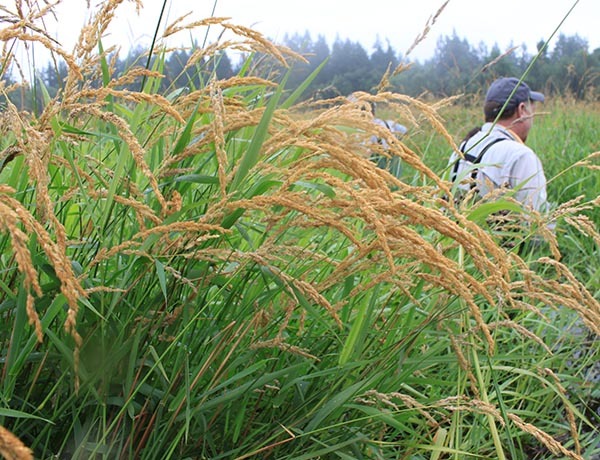
Identification and control publications
- King County Noxious Weed Control Program – Reed canarygrass identification and control
- King County Noxious Weed Control Program – Reed canarygrass best management practices
- Whatcom County – Control options for reed canarygrass
- Columbia Gorge Cooperative Weed Management Area – Best Management Practices for Reed Canarygrass
- The Nature Conservancy – Reed Canarygrass Control & Management in the Pacific Northwest
Scotch broom – Cytisus scoparius
Scotch broom is a common invasive in recently disturbed areas, including forest log landings and roadsides. This dark green to brown shrub produces bright yellow, pea-like flowers. It can grow 6-9 feet tall. It reproduces primarily by seed. When mature, seedpods split and can eject seeds up to 20 feet away. Seeds can remain viable for years in the soil. Scotch broom shades out the ground and hogs nutrients, reducing biodiversity in an area. It can impede the movement of wildlife and provides little benefit to native species. It is also highly flammable.
Noxious Weed Class Listing
Oregon – Class B
Washington – Class B
Control methods
- Pulling the plant out prior to seed pod maturation can be an effective removal method on small areas of land.
- Weed wrenches can assist with pulling larger plants.
- After pulling carefully monitor the site for regrowth, as the soil disturbance creates ideal conditions for sprouting.
- Cutting stems may be slightly effective on older plants that have woodier stems at the base. Monitor for resprouting after cutting.
- Herbicides may be useful for controlling larger patches.
Educational videos, seminars, & presentations on YouTube
- OSU Extension – Scotch Broom Removal
- Green Seattle Partnership – Scotch Broom Removal Tips
- Invasive Species Council of Metro Vancouver – Scotch Broom ID & Management
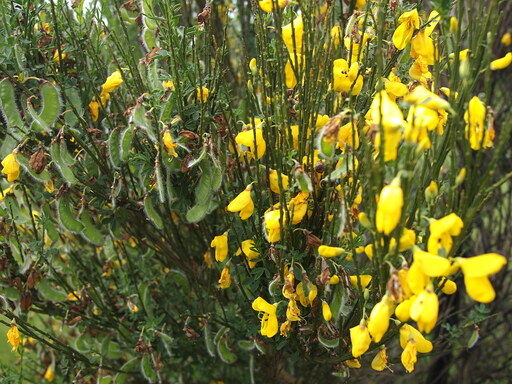
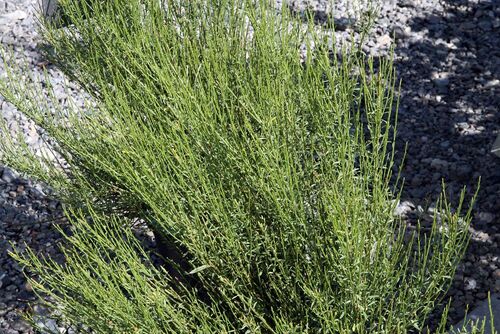
Identification and control publications
- King County Noxious Weed Control Program – Scotch broom identification and control
- King County Noxious Weed Control Program – Best Management Practices for Scotch Broom
- Whatcom County – Scotch Broom Management
- Pacific Northwest Extension – Scotch Broom Biology and Management in the Pacific Northwest
- Whatcom County – Control Options for Scotch Broom
- Oregon Department of Agriculture – Scotch Broom Profile
- Clackamas Soil and Water Conservation District – Best Management Practices for Scotch Broom

Leave a Reply